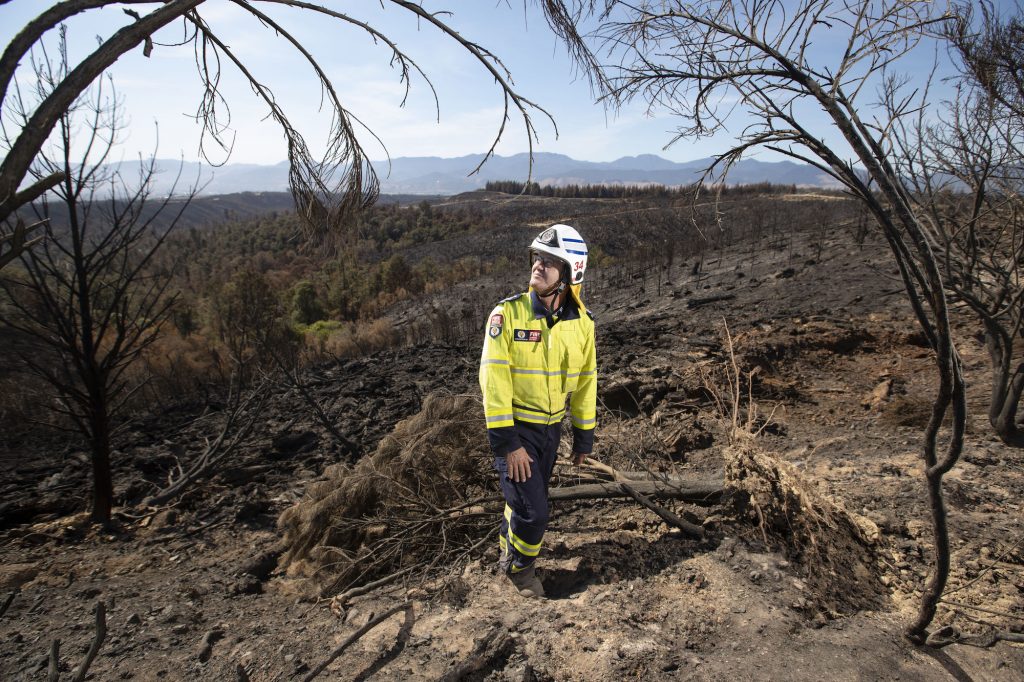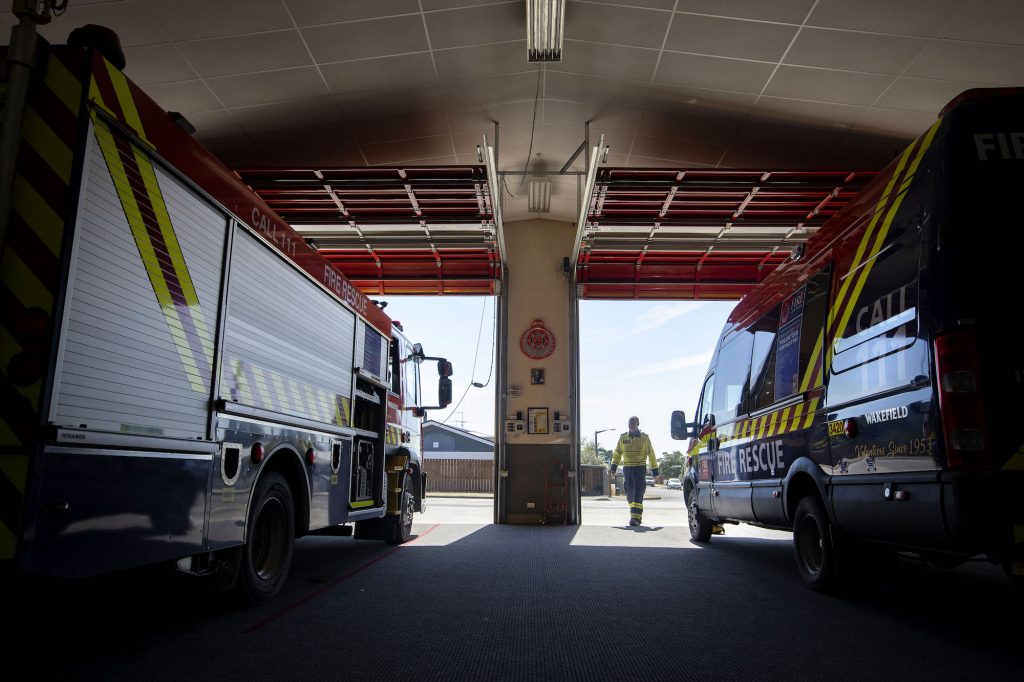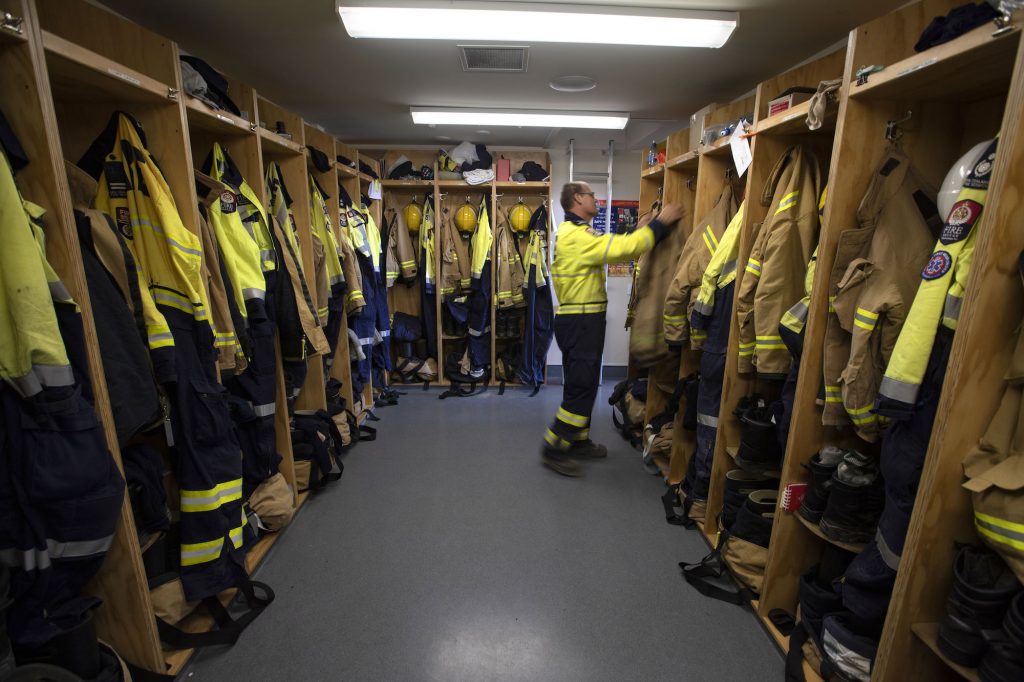
BY JOHN COHEN-DU FOUR | PHOTOGRAPHY TIM CUFF
Fritz Buckendahl will never forget 5 February 2019, when New Zealand’s largest fire since 1955 erupted in tinder-dry Pigeon Valley to quickly become an all-consuming maelstrom that dominated national headlines for weeks.
Then again, his perspective is a unique one: not only does Fritz work as a Logistics Woodflow Coordinator at Nelson Forests Limited, and hence understands the timber industry like the back of his hand, he’s also the Volunteer Fire Station Chief in Wakefield, at the centre of February’s conflagration.
“My wife Sue and I were driving back from the Phil Collins concert in Christchurch,” remembers Fritz. “We hit Murchison and I began receiving pictures on my phone from my son Nick. I knew immediately it was a biggie. When we reached the top of Spooners Range I could see it all. Everything was against the fire fighters – low humidity, dry fuels; it was hot, and very windy.
“Sue dropped me at the station and I immediately started fielding calls. I needed to gather information about the fire and check on the welfare of the brigade members and their families.
“Wakefield’s two appliances were first on the scene, so they’d started the initial fire attack. Brightwater’s rural brigade was next to arrive with their two appliances. Our Principal Rural Fire Officer (part of Fire and Emergency) was also very quick to respond to the call. After a quick hand-over briefing, Rural Fire Network, based in Richmond, had taken over the management of the fire event.
“Fire units are designated ‘rural’ and ‘urban’, each specialised accordingly,” says Fritz. “We’re an urban brigade so our specialty is structure fires, motor vehicle accidents and Hazchem callouts. Rural units like Brightwater specialise in vegetation events. Of course we’re all trained to assist each other in any disaster scenario.”
Rising through the ranks
Fritz started in forestry in 1981 as a woodsman cadet, learning all aspects of forestry: pruning, planting, seed collecting, and thinning to waste. Over the years he moved up through the ranks.
Today he strategically manages Nelson Forests’ woodflow – monitoring daily production, calculating output, and directing logs to meet customers’ requirements, both domestically and for export.
“I had nine years with the NZ Forest Service, then three years with Forest Products in Tokoroa, where I saw they were looking for volunteers to boost their fire brigade membership. I decided to give it a go.
When I shifted down to work for Nelson Forests I continued my fire service with the Wakefield Volunteer Brigade.”
Give it a go he did, and like Fritz’s career at Nelson Forests, he moved up the chain of command from recruit to firefighter, senior firefighter, deputy chief to chief.
“It’s like a military force,” says Fritz, “it is very structured. In critical situations you need that structure in place with a clear chain of command.”
While the Brightwater and Wakefield crews tried desperately to extinguish February’s initial blaze, conditions and the topography super-charged the fire’s progress. On hills, flames preheat the fuel further up the face, which then catches fire even more quickly, so the fire speed accelerates dramatically on an uphill slope. In the first five hours it travelled six kilometres.
“Even though conditions were atrocious, and the size unprecedented, Fire and Emergency were on to things in very short order,” says Fritz. “Rural Fire Network had previously run training scenarios in Pigeon Valley itself, which was pretty handy when you think how the real drama unfolded.”
State-of-the-art fire station
Fritz’s Wakefield station is an impressive resource that proved to be more than up to the task.
“It was built in 2010,” he explains, “and can withstand earthquakes to magnitude 8. Our location is strategic to the region’s disaster relief because we’re the only unit far enough away from the coast to be totally secure in the event of a tsunami.
“We’re a two-pump station, with two appliances permanently based here. Our layout is really well designed, with a roomy engine bay, separate changing room and a well-equipped kitchen. The people flow is highly efficient.”
That flow was certainly put to the test in February.
Non-stop calls and enquiries
“The fire started on Tuesday at 1.18pm,” says Fritz, “kicking off an endless series of calls to the station. I spent the entire first day on the phone. As Chief Fire Officer my role is to get the fullest picture, help coordinate resources, and assist the command centre where I could.
“I remember one call in particular. A man with a very strong Indian accent phoned in. He wanted to know how many worked in our team. I said we have 22 in our brigade. Later that night two gentlemen appeared with an enormous spread: butter chicken, rice, naan bread, the works. It was just what we needed. They came again the next night. That’s an example of the outpouring of support we received, not just from the local community, which was incredible, but also well beyond.”

Saving a sawmill
“By 2am on Wednesday, I was Division Commander for Yankee Sector, protecting Eves Valley, the Carter Holt Harvey sawmill, and Teapot Valley.”
Fritz was assigned teams from Stoke, Richmond, Upper Moutere and Takaka urban brigades as well as directing a D8 bulldozer and two 30-tonne excavators, to help secure the fire edge from spreading further. In addition, there were two fire appliances protecting the Eves Valley sawmill.
Nelson Forests’ supportive stance
Fritz points out that his devotion to his volunteer firefighter’s duties has never placed his employment at Nelson Forests at risk.
“They’ve always fully supported my role. When I became station chief, I told them it could pull me away from my work from time to time. Their reply was simply, ‘No problem, Fritz’. Anytime I’ve had to do a course or attend a conference – or respond to this most recent event – they’ve encouraged me 100 percent.
“Nelson Forests treat you like family. They’re forward-thinking and their values and integrity always stand up. Nelson Forests realise they themselves could just as easily have been in the firing line like their forestry neighbour, Tasman Pine Forests. It’s about looking out for one another.”

Evacuation added to the mix
As if all this wasn’t enough, Fritz and Sue, being Wakefield residents, were part of the town’s evacuation. “Friends in Hope put us up. It was so strange – Wakefield looked like some place in a plague disaster movie. No cars, no dogs, no sounds. It was eerie, a ghost town.”
For all he went through, Fritz is remarkably humble about his role. “When that siren goes, you know someone is in need of help. The great thing is that we’re trained to be able to respond immediately to render real assistance.”
He digs into a pile of letters received at the station during that time and pulls out a typical response from the public, a note written in blue felt pen decorated with small hand-drawn red hearts: “You are incredible,” it says. “Stay safe. Love you heaps!!”
